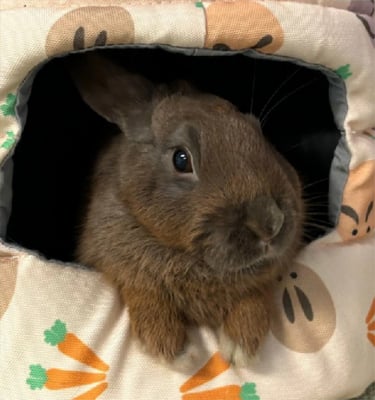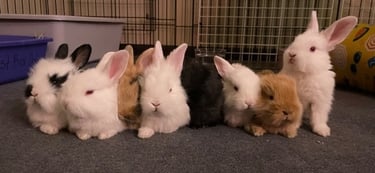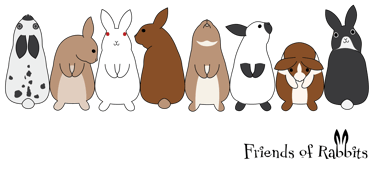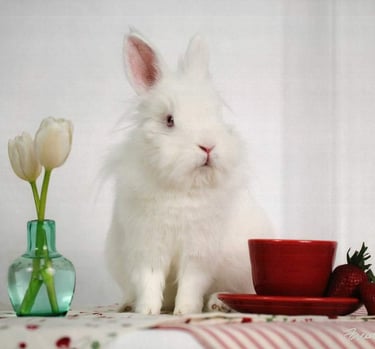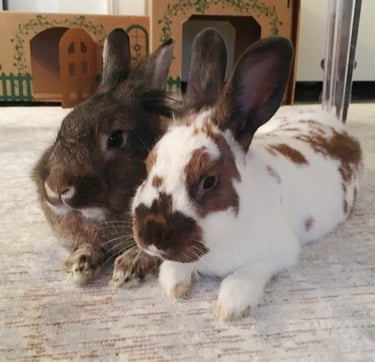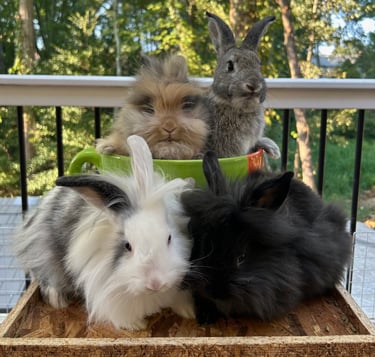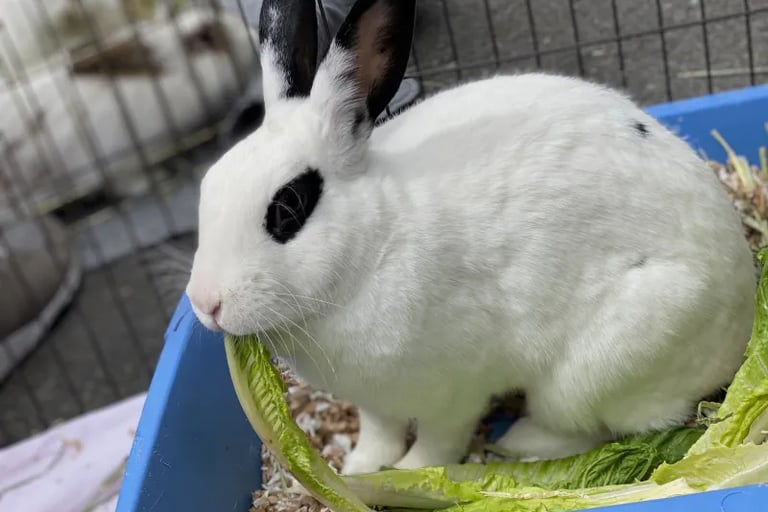
Friends of Rabbits, a 501(c)(3) nonprofit rabbit rescue group, has been dedicated to saving rabbits since 1997. As the largest domestic rabbit rescue in Washington DC/Maryland/Virginia, we provide a safe haven for house rabbits from crowded shelters, stray domestic rabbits, and those rescued from hoarding situations. We partner with rabbit rescues locally and all across the U.S. Together, we can give these rabbits the loving homes they deserve.
Friends of Rabbits
Rescuing Rabbits, Enriching Lives Together
Friends of Rabbits in the News!


GENERAL INFORMATION
Visiting our Facility:
Unless you are planning on purchasing supplies at our store and/or drop-off or pick-up for pet sitting services, please contact us to make an appointment to tour our facility and check out our bunnies. See further below for contact details.
Starting January 2026, we will be holding a once monthly Open House at our Columbia HQ. This is a chance for you to learn more about the rescue, find out ways to become involved, learn about rabbit care, and meet our rabbits! This will occur on the 3rd Sunday of each month from 2-4pm.
If you would like to register to attend, please complete the google form linked here: https://forms.gle/RVYTTyQ5KjekC2SP6
How to Adopt a Rabbit:
Please click here to view our Adoption page:
Finding a Home for your Rabbit:
Please note that our organization has limited resources, and we have a very limited number of foster homes. Therefore, we cannot take in any pet rabbits surrendered by individuals or families. We take in rabbits from crowded local shelters that need our assistance.
If you need to urgently find a new home for your rabbit, please first go to your local animal shelter.
Please do not bring your rabbits to us!
If you would like Friends of Rabbits to assist you with rehoming your rabbits, please click here for more information:
Contact Us:
Have a question or want to learn more about our rabbit rescue? Feel free to reach out to us by clicking the button to the right to fill out our contact form. You can also email us directly at: info@friendsofrabbits.org
Our facility is located at:
10706 Vista Rd.
Columbia, MD 21044
Hours of Operations:
Due to being a volunteer-driven organization, our hours of operation may change seasonally so please check back periodically for any changes on this site.
The following hours of operation apply only to store and grooming hours:
Sunday: 10am-5pm
Monday: 10am-5pm
Tuesday: CLOSED
Wednesday: 10am-5pm
Thursday: 10am-5pm
Friday: 10am-7pm
Saturday: 10am-5pm
Adoptions, bondings, and pet grooming services are by appointment only. We cannot handle walk-ins for these services.
WHY DONATE?
Your donations make it possible for Friends of Rabbits to care for abandoned and neglected rabbits and find them wonderful forever homes. Veterinary care is our single largest expense.
Friends of Rabbits saves hundreds of rabbits each year. There are considerable costs to spay/neuter and vaccinate these bunnies before they can be adopted. Your support will help us rescue more homeless rabbits.
Your donation will help prepare them for their fur-ever home. Help support us and make a difference today!
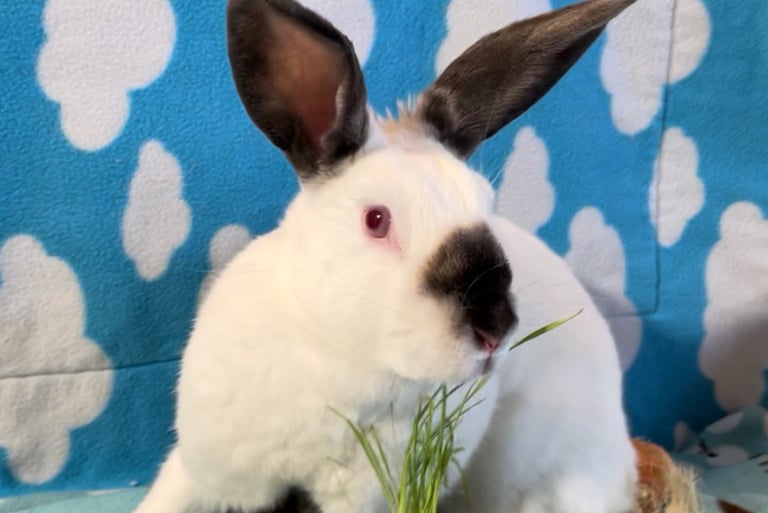

2024 Highlights:
180 rabbits rescued (compared to 130 rescued in 2023)
3 guinea pigs rescued
We took in animals from 11 shelters and four different states
We had 167 adoptions
We have 47 foster families
